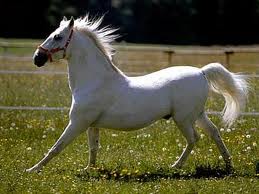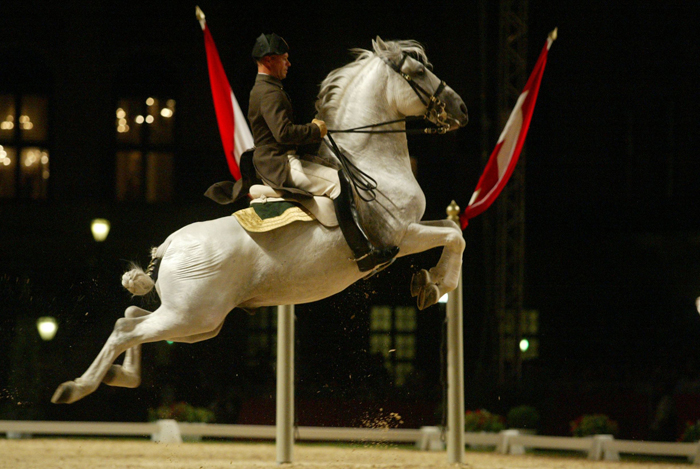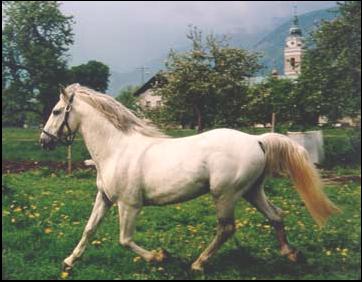



|
Lipizzaner Qualities
Some qualities of the Lipizzaner breed are that they are distinctively white in color. Some mature later in life than others, but they all have an equally sweet personality. Utilized for riding, for harness work, dressage uses, and most commonly for classical equitation purposes, the Habsburg nobles took breeding these horses very seriously and since the sixteen hundreds, the Lipizzaner breed has held steady in popularity in their native country. You can see them in many shows around the world and they are rather famous as stallions that perform with grace and elegance.
Lipizzaner Temperament
The breed of Lipizzaner is tough and sweet. They are one of the simplest to train as they are young and also remain highly trainable as they age. Most horses get set in their ways as they age, just as people do, but not this horse breed. They are eager to please and described as gentle, sweet, and very smart.
Lipizzaner Appearance
The Lipizzaner horse is tall with a beautiful white coat. Easily spotted, they have a muscular head and sloping shoulders. Most bode strong legs and are best suited for harness work. They are usually found in white coats, but can also be in gray as well. As they continued to be bred throughout the eighteen hundreds, they began to breed them as spotted and in the popular dun categories alike.
Lipizzaner Upkeep
Tending to your horses takes a lot of dedication. A Lipizzaner breed does lighten the workload for their owners as they tend to be easy to care for. A very bright horse with a lot of love to give and extremely simple to train, they make the younger stages of horse training much less work.
Lipizzaner History
The Lipizzaner horse breed has quite the remarkable pathology. Once referred to as the 'dancing horses of Vienna', they received their unique name from the Lipica horse, the stud this breed originated from. That famous stud was once called Lipizza and was derived in the late fifteen hundreds in Slovenia. A man named Archduke Charles II of Austria developed this breed and its popularity spread from that point on. During that era, many horses were primarily utilized for the strict purpose of traveling back and fourth from the Iberian peninsula as Krast horses. These horses that were sought after were generally white in color as the Lipizzaner breed is, and had to be, high stepping ones with a showy gait. At the time, the locals were seeking a horse that could be used for shows that was royal in appearance and could be utilized in court stables. They can be found currently in Czech Republic, Austria, Germany, Italy, Hungary, Croatia, Slovenia, and Lipica. Also, some can be spotted along the Adriatic Sea and in North America also.
|